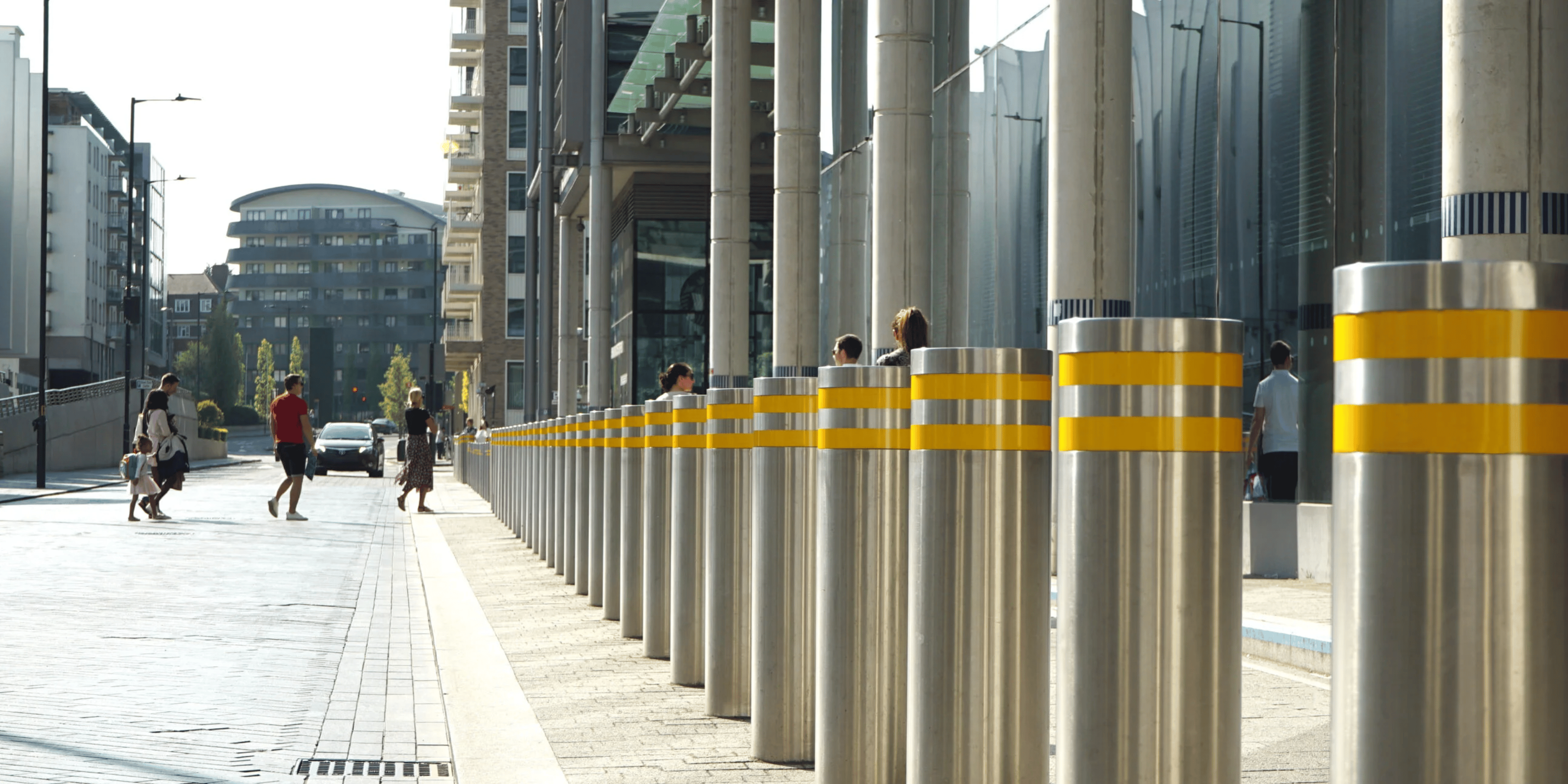
Understanding Executive Protection: Key Concepts for Construction Safety

Overview
The article highlights the critical role of executive protection in maintaining safety within high-risk environments, especially in construction. With the rise in threats facing high-profile individuals, it is evident that tailored safety strategies and advanced technology are essential. Ignoring these risks could lead to significant financial, operational, and reputational consequences for organisations. Therefore, investing in robust security measures is not merely an expense; it is a fundamental aspect of business resilience and continuity.
Introduction
In an era marked by escalating threats to high-profile individuals, the importance of executive protection is increasingly evident, particularly in high-risk environments such as construction sites. This specialised security service not only protects leaders but also strengthens overall safety protocols within organisations.
As incidents of violence against prominent figures continue to rise, the challenge for companies is clear: how can they effectively implement tailored protection strategies that ensure both security and operational efficiency?
By examining the fundamental principles and best practises of executive protection, we uncover critical insights that aid in risk mitigation and create a secure environment for leadership.
Defining Executive Protection: Core Concepts and Relevance
Executive protection, often known as close protection, is a specialised service designed to safeguard individuals who encounter heightened risks because of their status, occupation, or particular situations. This includes high-profile leaders, celebrities, and public figures. The primary goal of high-level security is to mitigate risks and ensure the well-being of those protected through a combination of physical security techniques, comprehensive risk assessments, and strategic planning.
In high-risk environments, such as construction sites, where leaders may encounter unique dangers, the importance of effective safeguarding is amplified. With a notable rise in assaults on high-ranking individuals, organisations must prioritise the to maintain operational continuity. Alarmingly, 20 percent of organisations report a lack of dedicated personnel for safeguarding, highlighting a significant deficiency in safety measures.
Effective personal safety strategies necessitate a proactive approach, including thorough threat assessments and the implementation of tailored safety plans. For example, agents specialising in executive protection are trained to seamlessly integrate into corporate settings, often donning smart business attire to avoid attracting attention to their protective role. This discretion is essential, as it enables them to manage logistics and facilitate smooth travel arrangements for their principals without exposing their security function.
Furthermore, the incorporation of advanced technology, such as AI-driven threat intelligence and biometric systems, enhances real-time risk assessment capabilities, empowering EPAs to anticipate and address potential threats effectively. As the executive protection market is projected to expand significantly, with personal safety services poised to lead, organisations must recognise the importance of investing in executive protection services to safeguard their leaders and uphold their reputations.
In conclusion, the core principles of high-level security encompass a commitment to well-being, strategic planning, and the ability to adapt to the unique challenges presented in high-risk environments like construction sites. By prioritising leadership protection, companies can safeguard their interests and establish a secure operational framework.

The Evolution of Executive Protection: Historical Context and Modern Adaptations
The concept of high-level security has undergone a profound transformation over the centuries. Its origins can be traced back to ancient societies, where leaders relied on loyal warriors for protection. In the 1970s, the field of executive protection evolved into a structured profession, characterised by advanced risk assessment techniques and strategic planning. Today, it encompasses not only physical protection but also the integration of cutting-edge technology, such as AI-driven surveillance systems, to bolster precautionary measures. This evolution is particularly significant in high-stakes environments like construction sites, where the complexity of threats is intensified by stringent safety regulations and compliance requirements.
Contemporary protective strategies now advocate for a holistic approach that includes digital safeguards, behavioural assessment, and proactive risk management. This ensures that leaders can operate safely and effectively in challenging settings. The increasing threats faced by prominent individuals, including corporate espionage and targeted intimidation, necessitate a robust executive protection framework that incorporates extensive monitoring, manned guarding, and CCTV systems.
Practical steps for enhancing security involve:
- Securing building access points with layered authentication
- Establishing secure zones for executive protection
- Implementing panic systems for rapid response
Furthermore, the role of human intelligence (HUMINT) and real-world analysis is crucial for improving situational awareness, while ongoing training equips security teams to navigate complex situations and adapt to evolving threats. Ethical integrity remains paramount for security professionals, as it cultivates client trust and ensures the effectiveness of safety strategies. Given the rising culture of assassination, tailored strategies are essential to mitigate exposure for high-profile clients, addressing their specific vulnerabilities. Ultimately, the combination of physical and digital safeguards is vital for in today's threat landscape.

Key Components of Effective Executive Protection: Strategies and Best Practices
Effective executive protection relies on several essential elements, including thorough risk assessments, tailored safety plans, and continuous monitoring. Risk assessments are vital for identifying potential threats and vulnerabilities specific to the individual and their environment. For instance, 71% of Chief Security Officers (CSOs) report a significant increase in physical threats, highlighting the necessity of these assessments in today’s climate.
Personalised protection strategies in executive protection must be adapted to the unique situations of each individual being safeguarded. This involves implementing , access control measures, and emergency response protocols. In construction environments, where risks can be heightened, integrating safety personnel with site management proves particularly effective. Such collaboration enhances communication and response times during incidents, ensuring a swift and coordinated approach to any threats.
Ongoing training and situational awareness for both the protectee and safeguarding personnel are essential in the context of executive protection to adapt to evolving threats. As the risk landscape changes, maintaining a proactive stance through regular updates to executive protection strategies becomes crucial. By prioritising these optimal methods, organisations can significantly enhance their leadership safeguarding efforts, ensuring the well-being and security of high-ranking individuals in dynamic environments.
The Importance of Executive Protection in Risk Mitigation and Safety Enhancement
The importance of security management is paramount, particularly in high-risk environments such as construction sites. A well-structured security programme not only protects individuals from physical threats but also bolsters overall safety measures within the organisation. By implementing comprehensive protective strategies, companies can significantly mitigate risks linked to theft, vandalism, and potential harm to personnel. Data indicates that organisations prioritising leadership security have experienced a notable improvement in outcomes, with expenditures on leadership safeguards increasing by nearly 119% from 2021 to 2024. This trend underscores a growing recognition of security's critical role.
Moreover, a robust approach to leadership safeguarding cultivates a security-oriented culture, enabling leaders to concentrate on their core responsibilities without distraction. This proactive method not only shields individuals but also fortifies the organisation's stability and reputation, ensuring that projects remain on track and comply with regulatory standards. Enhanced safety measures, driven by leadership initiatives, lead to improved employee morale and productivity, as staff feel valued and secure in their work environment. Ultimately, investing in goes beyond mere defence; it is a strategic necessity that enhances organisational resilience and operational efficiency.

Conclusion
The significance of executive protection in high-risk environments, such as construction sites, is undeniable. This specialised service is essential for safeguarding individuals who face increased threats due to their positions or circumstances. By implementing robust protective strategies, organisations can ensure the safety and well-being of their leaders, ultimately maintaining operational continuity and enhancing their reputations.
The reality is that executive protection has evolved significantly, from its historical roots to modern-day applications that incorporate advanced technology and comprehensive risk assessments. The necessity for personalised safety plans, ongoing training, and a proactive approach to risk management has become increasingly clear. As threats continue to rise, particularly in high-stakes environments, the integration of effective security measures is vital for protecting individuals and enhancing overall organisational safety.
That said, it is crucial for organisations to prioritise executive protection not merely as a defensive measure but as a strategic investment that enhances resilience and operational efficiency. By fostering a culture of safety and proactively addressing potential threats, companies can empower their leaders to focus on their core responsibilities, ultimately leading to improved morale, productivity, and project success. Embracing these principles of executive protection will pave the way for a safer and more secure operational framework in the construction industry and beyond.
Frequently Asked Questions
What is executive protection?
Executive protection, also known as close protection, is a specialised service designed to safeguard individuals facing heightened risks due to their status, occupation, or specific situations, including high-profile leaders, celebrities, and public figures.
What are the main goals of executive protection?
The primary goal of executive protection is to mitigate risks and ensure the well-being of those protected through a combination of physical security techniques, comprehensive risk assessments, and strategic planning.
Why is executive protection particularly important in high-risk environments?
In high-risk environments, such as construction sites, leaders may face unique dangers, making effective safeguarding crucial. The rise in assaults on high-ranking individuals emphasises the need for organisations to prioritise the safety of their leaders to maintain operational continuity.
What percentage of organisations lack dedicated personnel for safeguarding?
Alarmingly, 20 percent of organisations report a lack of dedicated personnel for safeguarding, indicating a significant deficiency in safety measures.
What strategies are involved in effective personal safety?
Effective personal safety strategies require a proactive approach, including thorough threat assessments and the implementation of tailored safety plans.
How do executive protection agents typically operate in corporate settings?
Executive protection agents are trained to seamlessly integrate into corporate settings, often wearing smart business attire to avoid drawing attention to their protective role, which allows them to manage logistics and facilitate smooth travel arrangements discreetly.
What role does technology play in executive protection?
Advanced technology, such as AI-driven threat intelligence and biometric systems, enhances real-time risk assessment capabilities, enabling executive protection agents to anticipate and address potential threats effectively.
What is the projected trend for the executive protection market?
The executive protection market is projected to expand significantly, with personal safety services expected to lead, highlighting the importance for organisations to invest in executive protection services.
What are the core principles of high-level security?
The core principles of high-level security include a commitment to well-being, strategic planning, and the ability to adapt to the unique challenges presented in high-risk environments.




